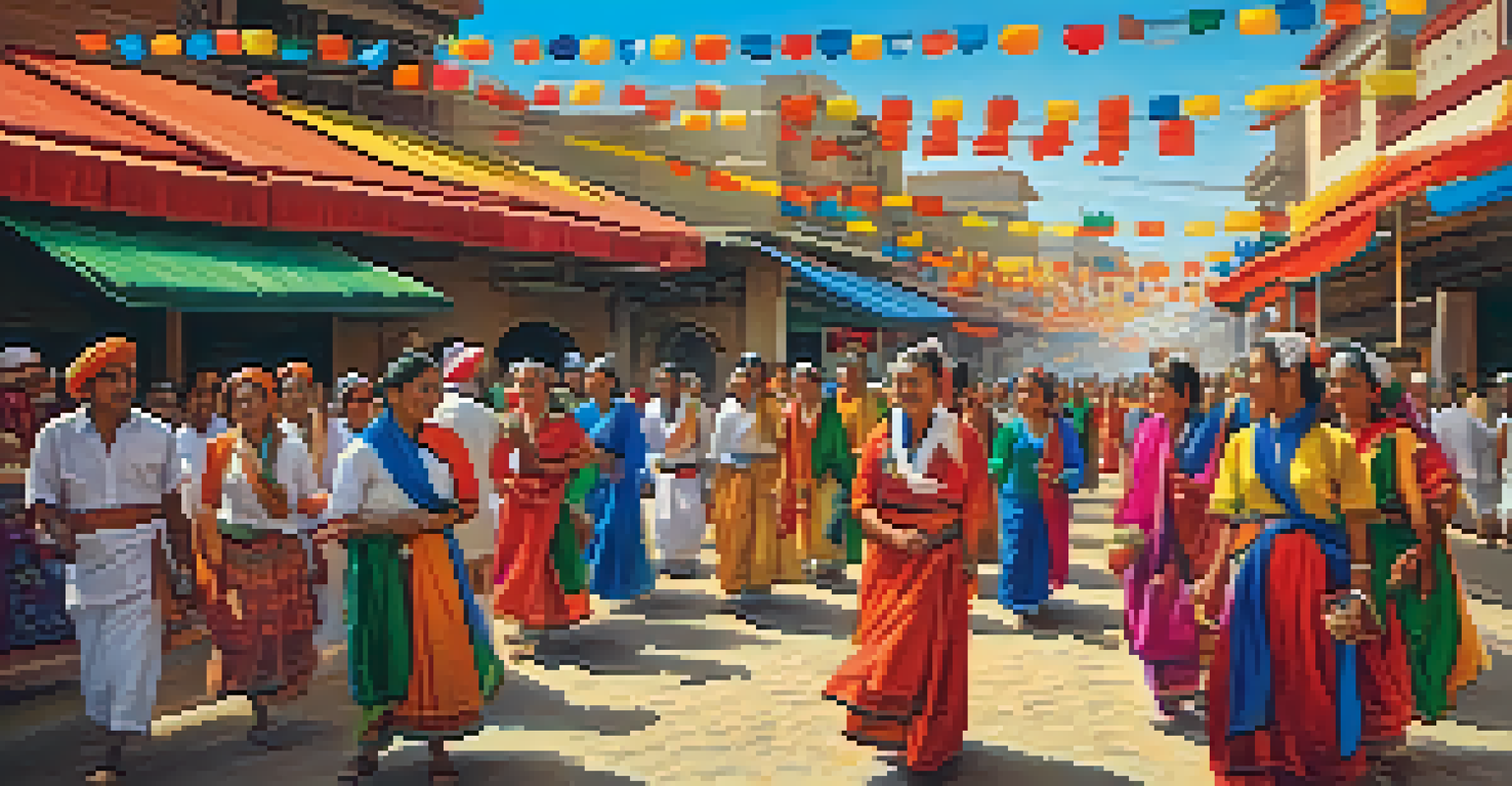The Power of Storytelling in Photography: Beyond the Image

Understanding the Essence of Storytelling in Photography
Photography isn't just about snapping pictures; it's about conveying emotions and narratives. Each image has the potential to tell a story that resonates with viewers, evoking feelings and sparking imagination. Think of a photograph as a window into another world, capturing a moment that reflects a larger tale.
Photography is the story I fail to put into words.
When photographers focus on storytelling, they elevate their work from mere documentation to engaging art. A simple portrait can become a powerful narrative when it encapsulates the subject's journey, background, or emotions. By recognizing the stories behind their images, photographers can create deeper connections with their audience.
Ultimately, understanding storytelling in photography allows artists to harness the power of their craft. It transforms ordinary scenes into compelling narratives that linger in the minds of viewers long after they’ve seen the image. This transformation is what makes photography a unique and impactful medium.
The Role of Composition in Telling a Story
Composition is like the stage on which your story unfolds. The way elements are arranged within the frame guides the viewer's eye and shapes their understanding of the narrative. For instance, using leading lines can draw attention to the focal point, emphasizing the story’s main character or action.

Consider how a well-composed photograph can convey a sense of urgency or calmness. A tightly framed shot can create intimacy, while a wide shot can provide context and scale. By thoughtfully considering composition, photographers can enhance the emotional depth of their images.
Storytelling Transforms Photography
Photography goes beyond capturing moments; it conveys emotions and narratives that resonate with viewers.
Ultimately, mastering composition enables photographers to tell richer, more engaging stories. It’s not just about what is in the frame, but how it is presented. Each choice made in composition contributes to the narrative, inviting viewers to explore and interpret the image.
Using Light and Shadow to Enhance Your Narrative
Light and shadow are essential tools in a photographer's storytelling arsenal. They can dramatically alter the mood and tone of an image, influencing how the story is perceived. For example, soft, diffused light might evoke a sense of nostalgia, while harsh shadows could create tension or drama.
A picture is worth a thousand words, but a story is worth a thousand pictures.
Think about how the golden hour, with its warm hues, can transform an ordinary scene into something magical. This interplay of light and shadow not only enhances the visual appeal but also adds layers of meaning to the narrative. By manipulating these elements, photographers can guide emotions in their audience.
Incorporating light and shadow effectively helps to create a more immersive experience for viewers. It draws them in, inviting them to explore the depths of the image and the stories it holds. Ultimately, understanding this dynamic can take your storytelling to the next level.
The Importance of Subject Matter in Storytelling
Choosing the right subject is crucial in crafting a compelling photographic story. The subject serves as the anchor of the narrative, guiding viewers through the story being told. Whether it's a person, an object, or a landscape, the subject should evoke interest and emotion.
For instance, a photograph of an elderly man sitting alone in a park can tell a story of solitude, reflection, or even joy. The viewer is invited to ponder the man's thoughts and history, making the image relatable on a personal level. This connection is vital for effective storytelling.
Composition Enhances Narrative Depth
The arrangement of elements in a photograph guides the viewer's understanding and emotional response to the story.
Ultimately, the subject matter can either enhance or diminish the story being told. By selecting subjects that resonate and provoke thought, photographers can create narratives that linger in the minds of their audience, fostering a deeper understanding of the story behind the image.
Capturing Emotion: The Heart of Storytelling
Emotion is at the core of effective storytelling in photography. Capturing genuine feelings can create a profound impact, allowing viewers to connect with the image on a personal level. Whether it's joy, sadness, or nostalgia, these emotions draw viewers into the narrative.
Consider how a child's laughter, frozen in time, can evoke feelings of innocence and happiness. Similarly, a photograph capturing a moment of grief can resonate deeply, telling a powerful story of loss and remembrance. Emotions can bridge gaps between cultures and experiences, making stories universally relatable.
By focusing on emotion, photographers can transform their images from simple snapshots into poignant narratives. This emotional connection is what elevates a photograph from being just a visual representation to a powerful story that speaks to the heart.
The Influence of Context in Photography Narratives
Context is a vital aspect of storytelling in photography, providing background and depth to the narrative. Understanding the environment and circumstances surrounding a moment can greatly influence how a story is perceived. This context helps viewers make sense of the image and its meaning.
For example, a photograph taken during a cultural festival captures not just the vibrant colors and smiles but also the rich traditions and history behind the celebration. This context allows viewers to appreciate the image on multiple levels, fostering a deeper connection to the story.
Context Enriches Photographic Stories
Providing background and context allows viewers to appreciate the deeper meanings behind images, fostering a stronger connection to the narrative.
Incorporating context into photography enriches the narrative and invites viewers to explore the larger picture. It encourages them to think critically about the image, leading to an enhanced understanding of its significance within a specific cultural or social framework.
The Evolution of Storytelling in Contemporary Photography
As technology evolves, so does the way we tell stories through photography. The rise of digital platforms has transformed photography from a static medium to an interactive experience. Today, photographers can combine images with text, video, and audio to create multi-layered narratives.
Consider how social media has allowed photographers to share not just a single image but a series of photos that tell a story over time. This dynamic approach invites viewers to engage with the narrative, creating a more immersive experience. It also allows for instant feedback and community interaction, further enriching the storytelling process.

Ultimately, the evolution of storytelling in photography reflects broader changes in society and technology. As photographers adapt to these changes, they continue to find innovative ways to connect with their audience, ensuring that the power of storytelling remains at the forefront of their craft.